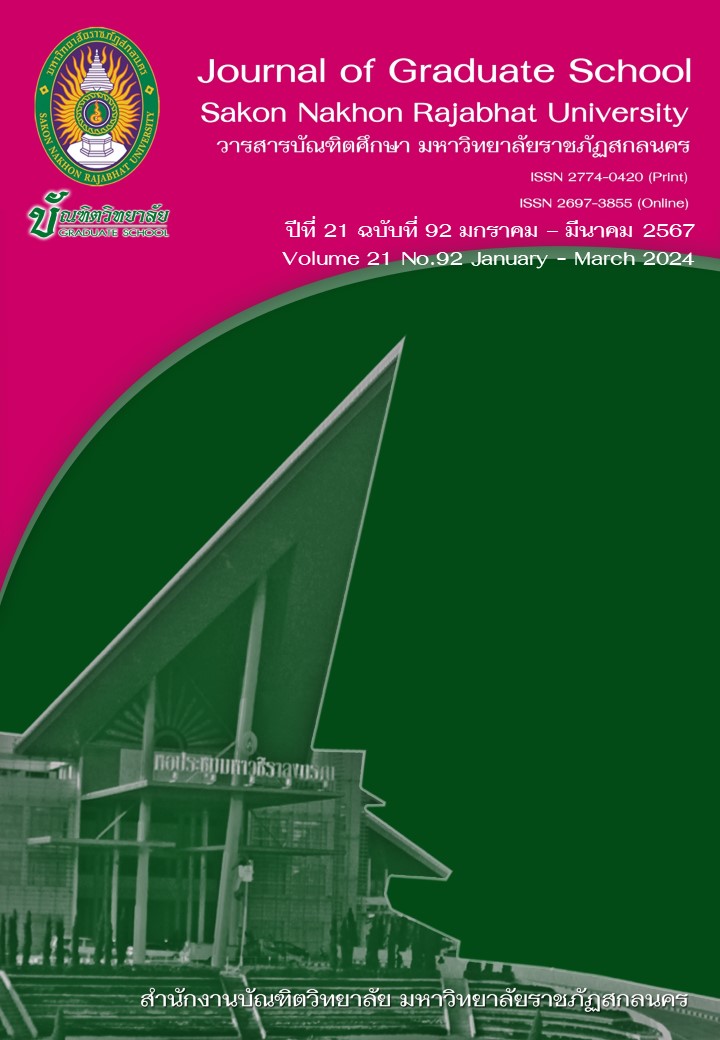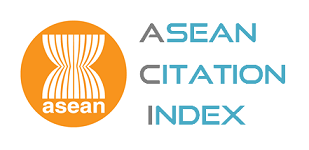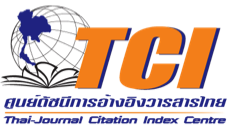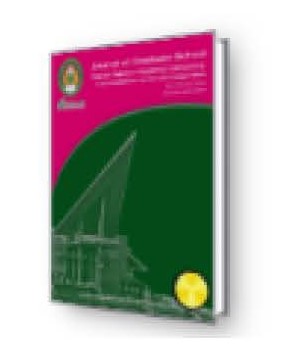GUIDELINES FOR CREATIVE LEADERSHIP DEVELOPMENT OF SCHOOL ADMINISTRATORS UNDER LOEI PRIMARY EDUCATIONAL SERVICE AREA OFFICE 1
Keywords:
Guideline Development, Creative Leadership, School AdministratorsAbstract
The purposes of this research were to 1) examine the current and desirable conditions, and priority need index of the creative leadership of school administrators, 2) establish guidelines for developing creative leadership of school administrators, and 3) assess guidelines for developing creative leadership of school administrators. The sample group consisted of 297 participants, including 34 school administrators and 263 teachers. The sample size determination followed Krejcie and Morgan's calculation method and stratified random sampling. The research tools included: 1) a set of questionnaires on current conditions regarding creative leadership of school administrators with the Item-Objective Congruence (IOC)index of 1.00 for all items, the item discriminative power ranging from .51 to .93, and the reliability of .954, 2) a set of questionnaires on desirable conditions on creative leadership of school administrators with the IOC index of 1.00 for all items, the item discriminative power ranging from .53 to .92, and the reliability of .973, 3) semi-structured interview forms, and 4) a form for assessing guidelines for developing creative leadership of school administrators, evaluated by five experts. Data analysis utilized statistics, such as frequency, percentage, mean, standard deviation, and the modified priority needs index (PNIModified). The qualitative data analysis was conducted through descriptive analysis.
The research results revealed that 1. the current conditions on creative leadership were overall at a high level. The desirable conditions were overall at the highest level. The top three modified priority needs index (PNIModified) ranks were as follows: 1) imagination and creativity, 2) vision, and 3) individualized consideration; 2.The guidelines for developing creative leadership of school administrators involved five components: 1)imagination and creativity, 2) vision, 3) individualized consideration, 4) flexibility and adaptation, and 5) teamwork; 3. The assessment result regarding the guidelines for developing creative leadership of school administrators achieved the highest level overall.
References
กิตติกร ธรรมกิจวัฒน์. (2562). การพัฒนาโปรแกรมเสริมสร้างภาวะผู้นำเชิงสร้างสรรค์ของผู้บริหารสถานศึกษาเอกชนสังกัดสำนักงานศึกษาธิการจังหวัดบุรีรัมย์. วิทยานิพนธ์ ศษ.ม. มหาสารคาม: มหาวิทยาลัยมหาสารคาม.
กิตติ์กาญจน์ ปฏิพันธ์. (2556). โมเดลสมการโครงสร้างภาวะผู้นําเชิงสร้างสรรค์ของผู้บริหารสถานศึกษาอาชีวศึกษา. วิทยานิพนธ์ ปร.ด. ขอนแก่น: มหาวิทยาลัยขอนแก่น.
แก้วมณี ปัทมะ. (2564). แนวทางการพัฒนาภาวะผู้นำเชิงสร้างสรรค์ของผู้บริหารสถานศึกษา สังกัดสำนักงานเขตพื้นที่การศึกษามัธยมศึกษาสุรินทร์. วิทยานิพนธ์ ศษ.ม. มหาสารคาม: มหาวิทยาลัยมหาสารคาม.
จักรกฤษณ์ โพดาพล. (2556). ภาวะผู้นำเชิงสร้างสรรค์ของผู้บริหารเทศบาลตำบลในจังหวัดร้อยเอ็ด. วิทยานิพนธ์ ศษ.ม. เลย: มหาวิทยาลัยมหามกุฎราชวิทยาลัยวิทยาเขตล้านช้าง.
จันทรา เทพอวยพร. (2560). รายงานการประชุมใหญ่สามัญประจำปี 2559 และประชุมวิชาการเรื่อง “ห้องสมุดดิจิทัลกับการก้าวสู่ยุค Thailand 4.0”. 23 มีนาคม 2560. กรุงเทพฯ: มหาวิทยาลัยมหิดล.
นัยนา ชนาฤทธิ์. (2556). ภาวะผู้นำเชิงสร้างสรรค์ของผู้บริหารสถานศึกษา สังกัดสำนักงานเขตพื้นที่การศึกษาประถมศึกษาขอนแก่น เขต 5. วิทยานิพนธ์ กศ.ม. มหาสารคาม: มหาวิทยาลัยมหาสารคาม.
บุณรดา ทรงบุญศาสตร์. (2559). การพัฒนาโปรแกรมเสริมสร้างภาวะผู้นำเชิงสร้างสรรค์ของผู้บริหารสถานศึกษา สังกัดสำนักงาน เขตพื้นที่การศึกษามัธยมศึกษา เขต 24. วิทยานิพนธ์ กศ.ม. มหาสารคาม: มหาวิทยาลัยมหาสารคาม.
เพ็ญนภา ศรีภูธร. (2562). การศึกษาภาวะผู้นำเชิงสร้างสรรค์ของผู้บริหารสถานศึกษาขั้นพื้นฐาน สังกัดสำนักงานเขตพื้นที่การศึกษาระยอง. วิทยานิพนธ์ ค.ม. จันทบุรี: มหาวิทยาลัยราชภัฏรำไพพรรณี.
ไพฑูรย์ สินลารัตน์. (2553). ผู้นำเชิงสร้างสรรค์และผลิตภาพ : กระบวนทัศน์ใหม่และผู้นำใหม่ทางการศึกษา. กรุงเทพฯ: โรงพิมพ์แห่งจุฬาลงกรณ์มหาวิทยาลัย.
มณฑาทิพย์ เสยยงคะ. (2556). การพัฒนาตัวบ่งชี้ภาวะผู้นำเชิงสร้างสรรค์ของผู้บริหาสถานศึกษาสำนักงานส่งเสริมการศึกษานอกระบบและการศึกษาตามอัธยาศัยสำนักงานปลัดกระทรวงศึกษาธิการ กระทรวงศึกษาธิการ. วิทยานิพนธ์ ค.ด. มหาสารคาม: มหาวิทยาลัยราชภัฏมหาสารคาม.
วิจิตร วรุตบางกรู และสุพิชญา ธีระกุล. (2553). การบริหารโรงเรียนและการนิเทศการศึกษาเบื้องต้น. สมุทรปราการ: ขนิษฐ์การพิมพ์.
วิโรจน์ สารรัตนะ. (2555). แนวคิด ทฤษฎี และประเด็นเพื่อการบริหารทางการศึกษา. (พิมพ์ครั้งที่ 8). กรุงเทพฯ: หจก.ทิพยวิสุทธิ์.
สมศักดิ์ คงเที่ยง. (2555). ภาวะผู้นำการเปลี่ยนแปลงของผู้บริหารสถานศึกษาในหลักวิชาชีพทางการศึกษา. กรุงเทพฯ: พี.เอ.ลีฟวิ่ง.
สุธรรม ธรรมทัศนานนท์. (2554). หลักการ ทฤษฏีและนวัตกรรมการบริหารการศึกษา. (พิมพ์ครั้งที่ 2). มหาสารคาม: มหาวิทยาลัยมหาสารคาม.
สุภาพ ฤทธิ์บำรุง. (2556). ภาวะผู้นำเชิงสร้างสรรค์ของผู้บริหารสถานศึกษาที่ส่งผลต่อความมีประสิทธิผลของโรงเรียนสังกัดสำนักงานเขตพื้นที่การศึกษามัธยมศึกษา เขต 30. วิทยานิพนธ์ ศษ.ม. ขอนแก่น: มหาวิทยาลัยขอนแก่น.
สำนักงานเขตพื้นที่การศึกษาประถมศึกษาเลย เขต 1. (2564). แผนปฏิบัติการประจำปี 2564. เลย: กลุ่มงานแผนและนโยบาย สำนักงานเขตพื้นที่การศึกษาประถมศึกษาเลย เขต 1.
สำนักงานคณะกรรมการการศึกษาขั้นพื้นฐาน (2557). การพัฒนาประสิทธิภาพโรงเรียนขนาดเล็กให้เป็นไปตามเกณฑ์มาตรฐานของสำนักงานคณะกรรมการการศึกษาขั้นพื้นฐาน. กรุงเทพฯ: โรงพิมพ์ชุมนุมสหกรณ์การเกษตรแห่งประเทศไทย.
Cronbach, L. J. (1970). Essentials of psychological testing. (5th ed). New York: Harper & Row.
Danner, S. E. (2008). Creative Leadership in Art Education: Perspectives of an Art Educator. Thesis Master of Arts, Art Education, Fine Art: Ohio University.
Krejcie, R.V., & Morgan, D.W. (1970). Determining Sample Size for Research Activities. Educational and Psychological Measurement, 30(3), 607–610.
Likert, A. (1961). New Patterns of Management. New York: McGraw–Hill Book Company Inc.
Sternberg, Robert J. (2006). Teaching for Successful Intelligence. Auckland: Penguin Book.
Downloads
Published
How to Cite
Issue
Section
License
Copyright (c) 2024 Journal of Graduate School Sakon Nakhon Rajabhat University

This work is licensed under a Creative Commons Attribution-NonCommercial-NoDerivatives 4.0 International License.
บทความทุกบทความที่ตีพิมพ์ในวารสารบัณฑิตศึกษา มหาวิทยาลัยราชภัฏสกลนคร ถือว่าเป็นลิขสิทธิ์ของบัณฑิตวิทยาลัย มหาวิทยาลัยราชภัฏสกลนคร










